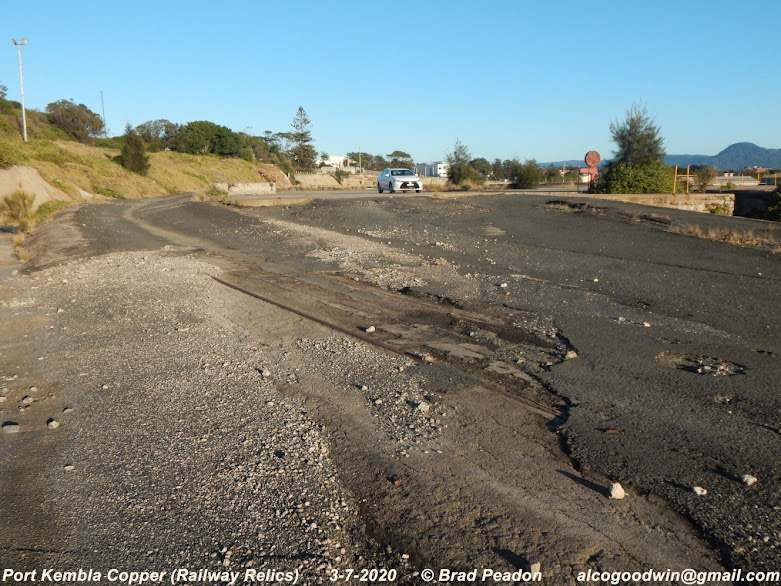During a recent visit to Port Kembla, Nips Cassidy and I decided to take it upon ourselves to go see if there was much in the way of rail relics on the old Port Kembla Copper site.
Not surprisingly, most of it has long since disappeared. However, we did find a good bit remaining.
A scrap metal operation is currently situated on the lower level, where most of the narrow gauge existed. We talked to the boss there who proudly pointed out that he had scrapped more than 100 locomotives over a number of states.
A scrap metal operation is currently situated on the lower level, where most of the narrow gauge existed. We talked to the boss there who proudly pointed out that he had scrapped more than 100 locomotives over a number of states.
I suspect he was responsible for the massacre of the steelworks fleet in recent years.
The plant was founded in 1907 as the Electrolytic Refining and Smelting Co of Australia (ER&S).
It was later sold to CRA in September 1990 and renamed Southern Copper.
It was later sold to CRA in September 1990 and renamed Southern Copper.
Southern Copper closed in February 1995 following ongoing environmental hassles and an ultimatum to clean up it's operations.
A year later, a consortium of four Japanese companies purchased the site and, despite a $600 million investment, environmental issues saw community anger grow.
This lead to final closure in July 2003.
Of interest is that the plant was originally built to process ore railed from Captains Flat in the Southern Tablelands (NSW).
Note: All numbers in brackets refer to the above Google Earth image.
--------------------------------------------------------
Narrow Gauge
(1)Taken on the upper level of the site, the base of this building still survives and appears to have been served by both standard gauge (a loading dock can just be seen here) and narrow gauge (which appears to have gone up to, but not entered, the building.
(2)This short section of narrow gauge track is located not far off Darcy Road
as you enter the site.
The following images show the surviving sections of narrow gauge track (lower level) that were noted from the upper level of the site.
This looked like some standard gauge track crossing over the plants narrow gauge.
Nothing like this appears in the map published in Light Railways (February 2003) which does differ somewhat from what we saw. Perhaps it was based on usable track at the time of publishing.
Nothing like this appears in the map published in Light Railways (February 2003) which does differ somewhat from what we saw. Perhaps it was based on usable track at the time of publishing.
(1)Another look at the upper level building, with the standard gauge loading dock being more clearly seen in the top right corner.
Standard Gauge
Standard gauge dock platform.
(1)Three photos above show the earlier mentioned standard gauge track into the upper level building, with narrow gauge alongside.
Above three shots show Nips Cassidy walking along the former standard gauge
line towards the ore bins.
(5)The first shot shows the curve at the top of the grade from Darcy Road. Here is curves to the west and eventually parallels Military Road
(3)The second shot shows, what appeared to be, a buried section of rail.
(4)The third (background) shows where the line would have curved towards the ore bins, which would have been to the right of the photo.
(5)The first shot shows the curve at the top of the grade from Darcy Road. Here is curves to the west and eventually parallels Military Road
(3)The second shot shows, what appeared to be, a buried section of rail.
(4)The third (background) shows where the line would have curved towards the ore bins, which would have been to the right of the photo.
Not really a railway relic, but quite cool to find it still standing there when everything around it has been obliterated.
-------------------------------------------------
The late Ron Preston wrote an article on the ER&S locomotives which appears in the February 2003 issue of Light Railways magazine (freely available on the LRRSA website).
The 'Illawarra Light Railway Museum' have preserved the 2ft gauge Hudson-Hunslet locomotives.
------------------------------------------------
Special thanks to Chris Stratton for his help.
Recent posts:



























No comments:
Post a Comment